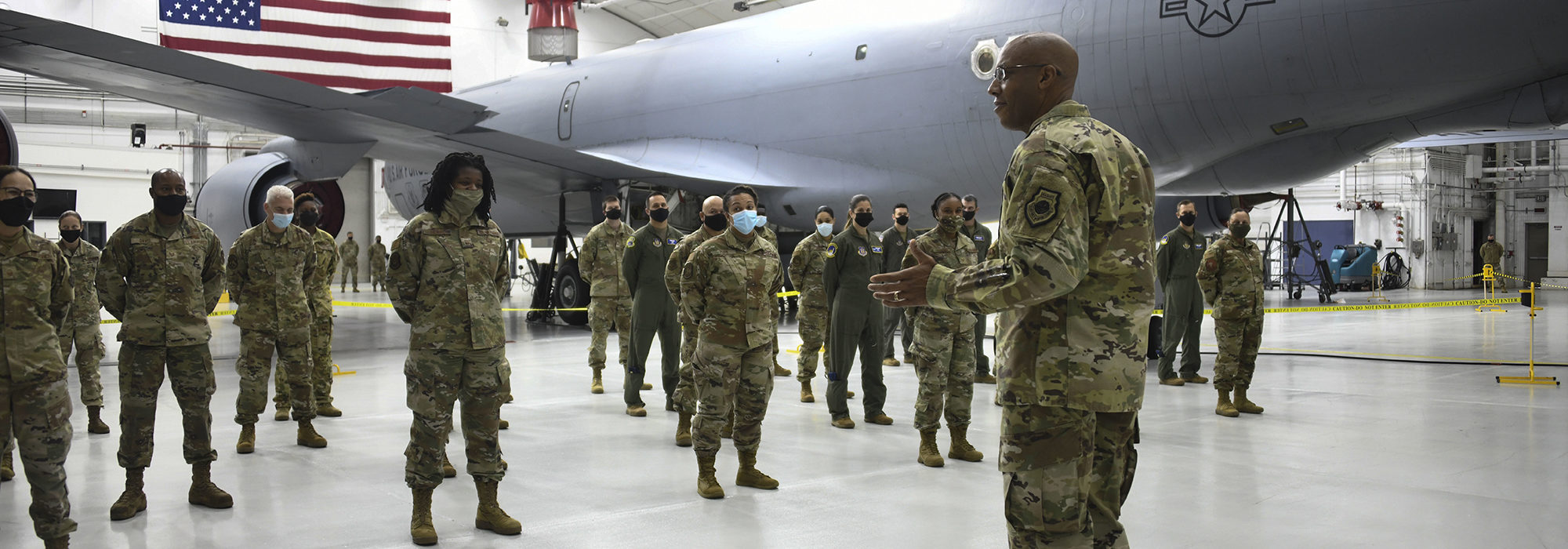Horseman, Pass By
This story was originally published Feb. 17, 2022.
Frank Maxwell Andrews graduated from West Point in 1906. He entered the Cavalry and stayed 11 years. He saw the world and built a sterling career, moving in elite Washington social circles.
Andrews, to the dismay of superiors, abandoned that life in 1917 to join Army aviation. He was awarded wings at the age of 34. During the next 17 years, he held numerous executive positions, attended top Army schools, and commanded 1st Pursuit Group in Michigan.
All this was just prologue to his life’s main event, one that led to his being honored as namesake for Andrews Air Force Base, Md.
In Fall 1934, he was assigned to the General Staff to develop a plan for an “air force,” one that would, for the first time, gather all air combat units under an air officer. Andrews was chosen to command that creation—General Headquarters (GHQ) Air Force.
His elevation on March 1, 1935, touched off a running, four-year battle with the General Staff, Navy, War Department, and rival Airmen, all of whom opposed Andrews’ drive for an integrated force.
He staffed GHQ Air Force with the most energetic air power enthusiasts in uniform, giving the command a strong institutional foundation. He won greater autonomy for the Army’s fliers.
As an aggressive proponent of strategic air power, he put his career on the line to champion procurement of large numbers of B-17 Flying Fortresses, bucking top Army brass.

His bombers, in foul weather, intercepted and “bombed” USS Utah in a 1937 exercise. In a 1938 war game, Army B-17s intercepted a mock “carrier”—the Italian ocean liner Rex—725 miles east of New York. Both events infuriated an embarrassed Navy.
Andrews, a consummate pilot himself, insisted on realistic training. He pushed for modern standards of flying in all weather and pioneered instrument flying techniques.
In four years, Andrews took a force that existed only on paper and turned it into a well-organized, though small, combat arm.
Andrews suffered retribution from Army superiors. He was not reappointed to his GHQAF post and was exiled to Texas. Gen. George C. Marshall, as the new Army chief, soon recalled Andrews to help prepare U.S. forces for looming involvement in a new world war.
In World War II, Andrews led joint-U.S. service commands in the Caribbean, Middle East, and Europe, rising to lieutenant general. He was a leading contender to command the 1944 Normandy Invasion, but he perished in a May 3, 1943, crash of his B-17 bomber in Iceland. The job went instead to Dwight D. Eisenhower.
For all his World War II achievements, Andrews’ greatest significance rests on preparing the Army’s prewar air combat forces for its massive war effort and its future as the U.S. Air Force.
Today, Andrews Air Force Base denotes the airfield portion of Joint Base Andrews, formed from a 2009 merger of the USAF base and Naval Air Facility Washington. It is home to two Boeing VC-25A aircraft, call sign Air Force One when the president is aboard.
Frank Maxwell Andrews
- Born: Feb. 8, 1884, Nashville, Tenn.
- Died: May 3, 1943, Mount Fagradalsfjall, Iceland
- College: U.S. Military Academy, West Point, N.Y.
- Occupation: U.S. military officer
- Services: US Army—Cavalry, Signal Corps, Air Service, Air Corps, Air Forces
- Main Eras: World War I, Interwar, World War II
- Years of Service: 1906-43
- War Zones: European Theater of Operations, World War II
- Final Grade: Lieutenant general
- Awards/Honors: Distinguished Service Medal (2, one awarded posthumously), Distinguished Flying Cross, Air Medal (10), Purple Heart (awarded posthumously), World War I Army Occupation of Germany Medal
- Resting place: Arlington National Cemetery
Andrews Air Force Base
- State: Maryland
- Nearest City: Washington, D.C.
- Area: Approx. 6.8 sq mi / 4,346 acres
- Status: Open, operational
- Opened as Camp Springs AAF: May 2, 1943
- Renamed Andrews Field: May 2, 1945
- Renamed Andrews Air Force Base: June 24, 1948
- Current owner: Air Force District of Washington
- Former owners: First Air Force, Continental Air Forces, Strategic Air Command, Military Air Transport Service, Bolling Field Command, Air Defense Command, Eastern Air Defense Force, Headquarters Command, Military Airlift Command, Air Mobility Command.
- Home of: 316th Wing, 89th Airlift Wing



